Szejkefürdő (Băile Seiche) is a well known tourist attraction today for several reasons. Up until 2020, there was the grave of Balázs Orbán, the Székely gates, the spa and the Szejke mineral water and bath museum that attracted the visitors. Starting from 2020, there's the Mini Transilvania park as well, which I'm going to cover in an upcoming post. Today I'd like to show you the gates and Balázs Orbán's grave.
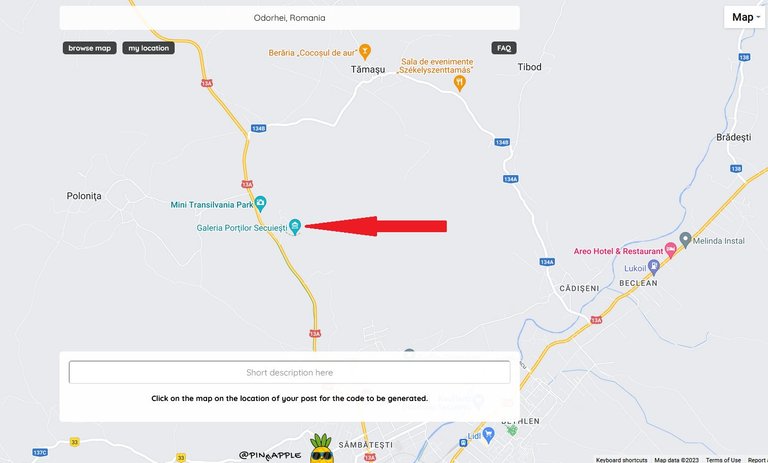
How To Get There
Szejkefürdő (Băile Seiche in Romanian) is a district of Székelyudvarhely (Odorheiu Secuiesc) in Romania, Transylvania, Harghita County. It is located 4 km northwest of Székelyudvarhely, in the valley of the Sós-patak. According to ethnographers, its name, "sheyke", means turbid, and it got its name from its gray medicinal water, similar to sea water. source
DN 13A road takes you there, you can't miss it. However, be aware of the crowd, especially at weekends, which means parking can be a bit of a problem. Parking is free by the way.
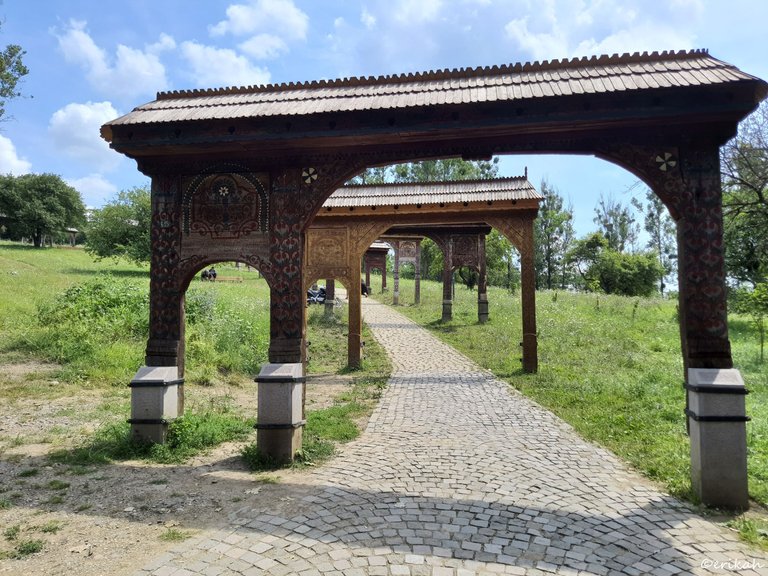
Balázs Orbán's grave and memorial monument is situated on a hill and to get there, you have to climb the hill, under these Székely gates. We came from the other side, we came drown here, so I'm going backwards with my photos :)
The Székely gate is the pinnacle of Hungarian folk art, including monumental wood carving, but also folk architecture. The gate, which is traditionally called a large, covered or dovecote gate, has been called Székely gate since the beginning of the 1900s, borrowing its name from Székelyland, where the practice of making it was relegated to that time. It has three columns, a bay, and it is connected by a horizontal beam on top, the eyebrow tree or bun tree, on which the dovecote (pigeon hut) is often built. The distance between the columns is different, giving space to the large and small gates, i.e. freight and passenger traffic. In regions poorer in wood, or the less well-off, gates were also erected where only the small gate has a cover or perhaps a dovecote, while the large gate has a simple leaf design without a cover. Often these were also called Székely gate. source
These are the traditional gates you see in that region and these mean a lot to the home owners. Most of the gates are nicely carved, not only for aesthetic reasons, but also to let the visitors know where they are and where they are going to enter.
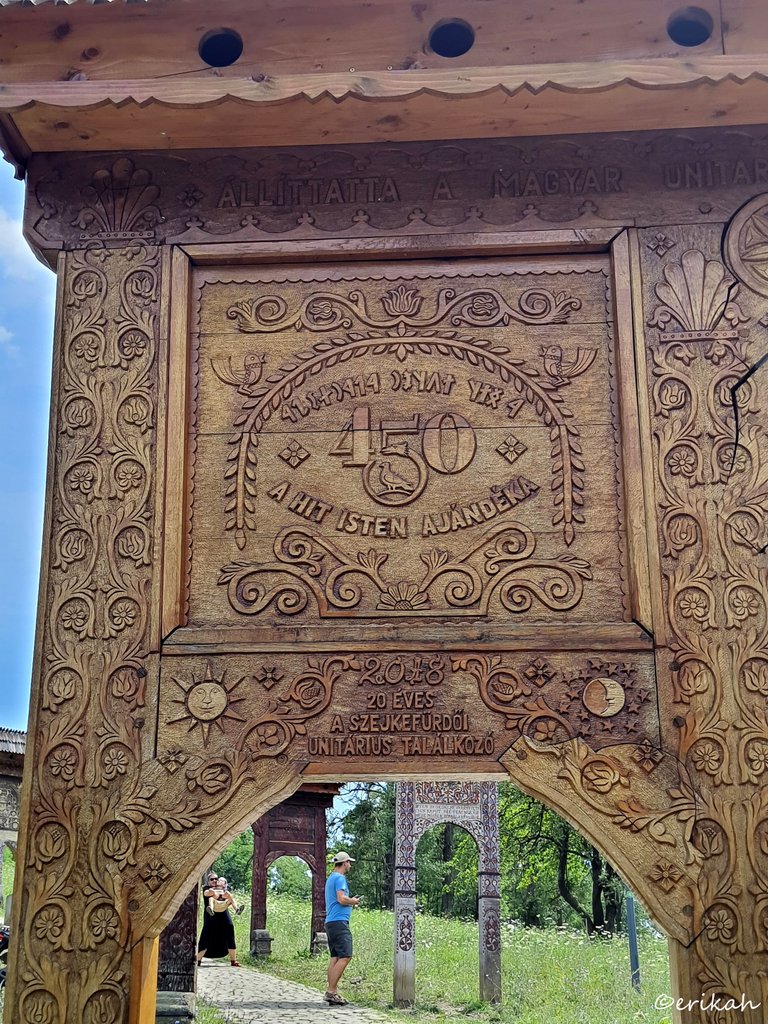
This is a memorial gate, set up by the Unitarian church of Szejke, with the occasion of celebrating 20 years of existence of the Unitarian's meeting.
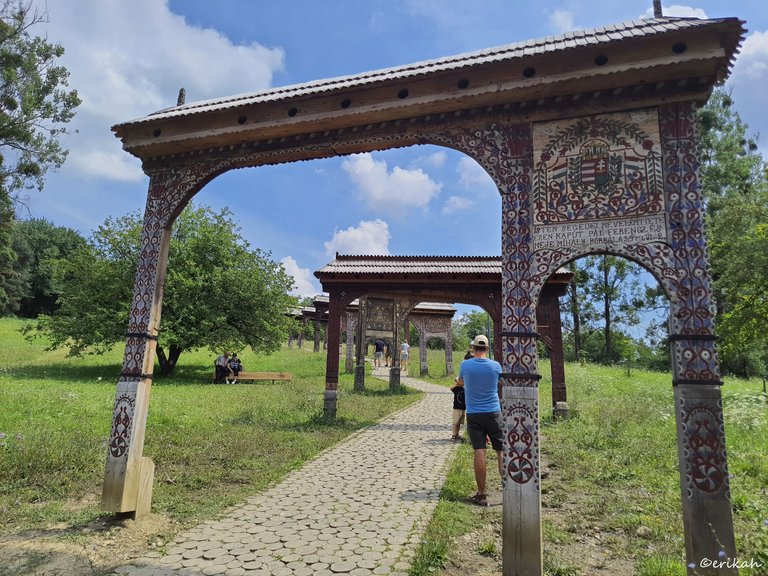
Back in the day, these gates were made, carved and painted manually as there were no machines to use in the process. I have no idea how much time it took to finish a gate like this, doors too (doors are removed here so the visitors can walk freely), but it wasn't finished in a day for sure.
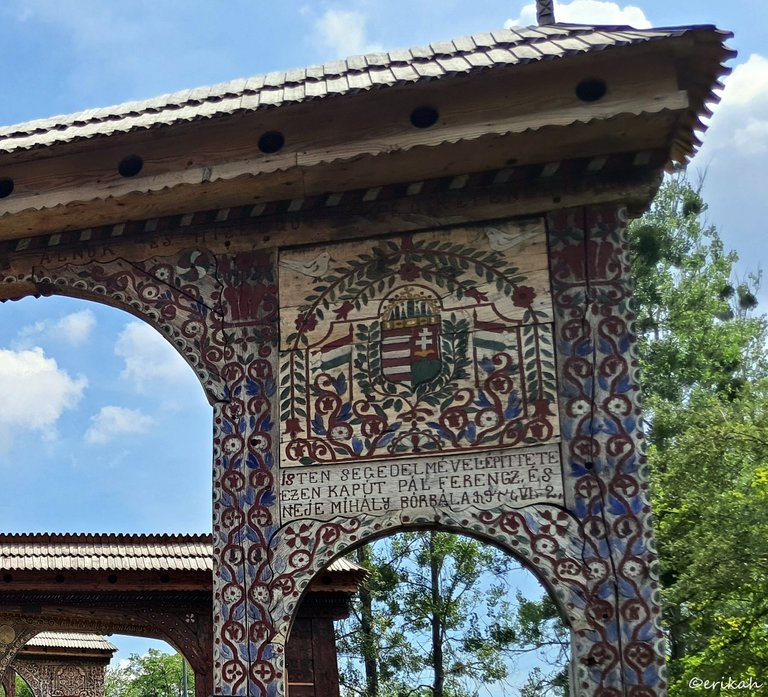
This is a cropped image for you to see the message carved under the decoration containing the crest. This says:
This gate was made with the help of God, by Ferencz Pál and his wife, Borbála Mihály, on June 2, 19?4.
I can't figure it out what number is that after the 9, unfortunately. In any case, judging by the language used and the style, must have been in early 1900's. At the top, usually there's a message for those coming to visit, a type of blessing or well wishes.
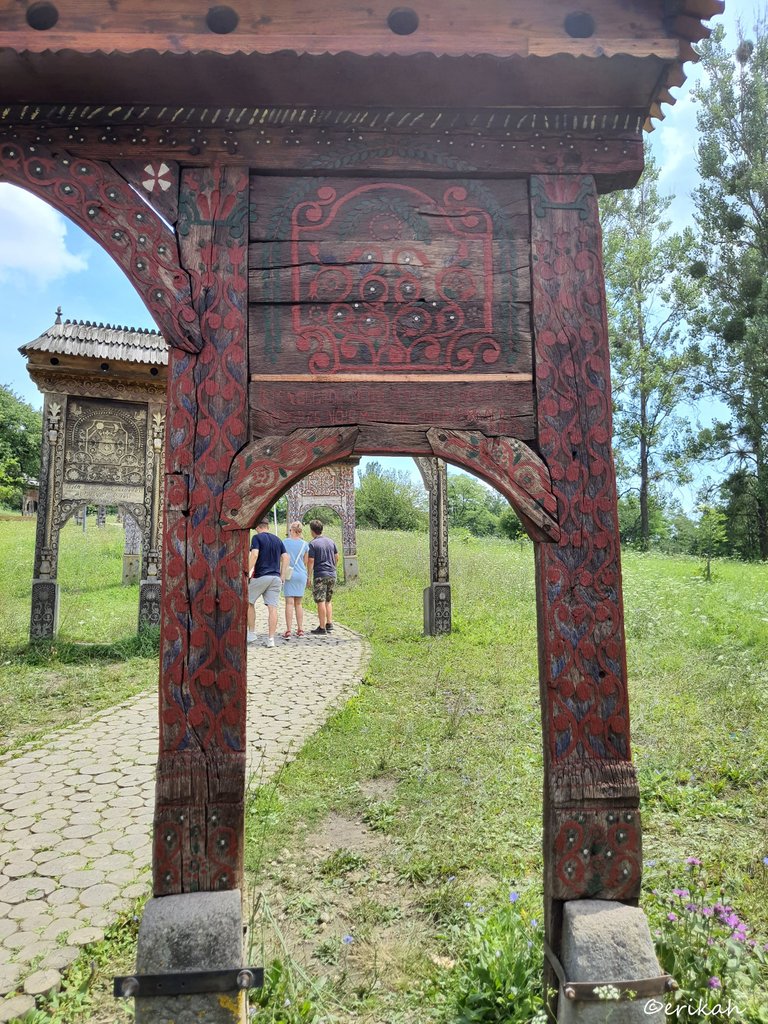
These gold gates were collected from here and there, from places where houses were demolished and brought here to preserve them.

This is a new one, from 2000. I mean new compared to the rest of them, but this one is already 23 years old. This was made by the Unitarian church. The design is absolutely mind blowing in my opinion. This gives you an idea about how important these gates were. maybe still are.
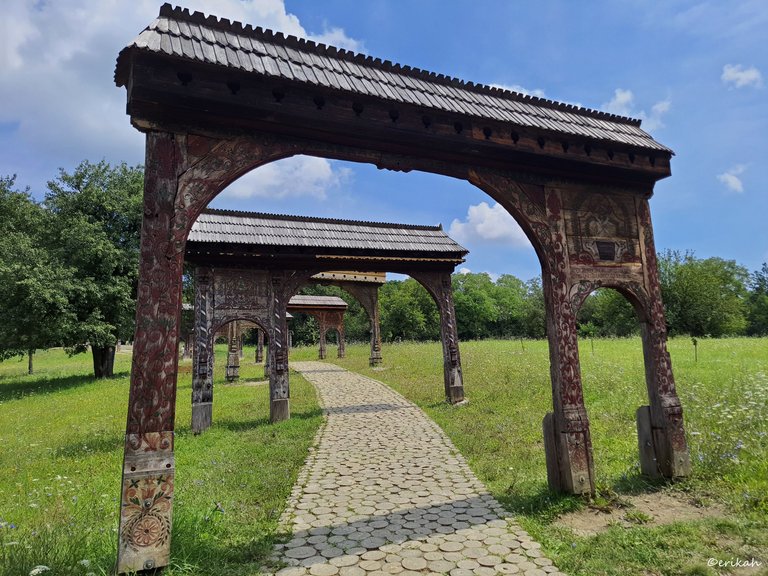
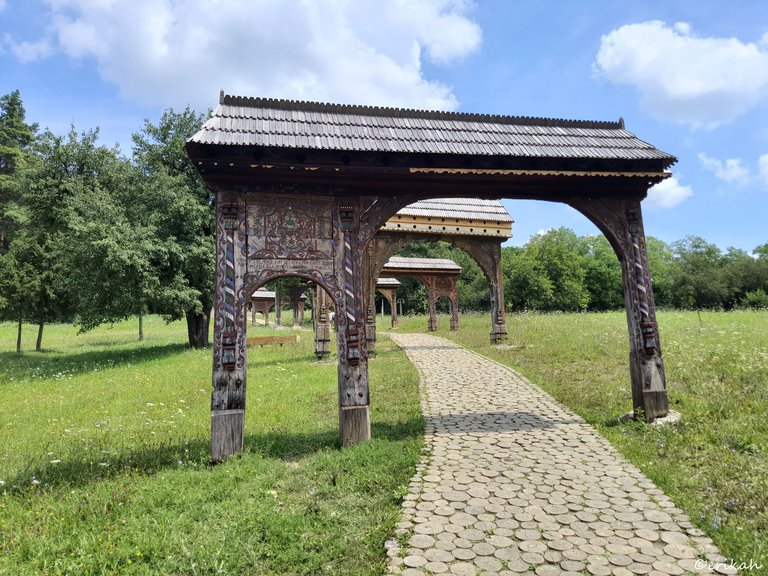
At the beginning, when the project started, there were only a few of these gates. Over the years more and more have been added and I hope the project continues as it would be a shame to waste these artworks.
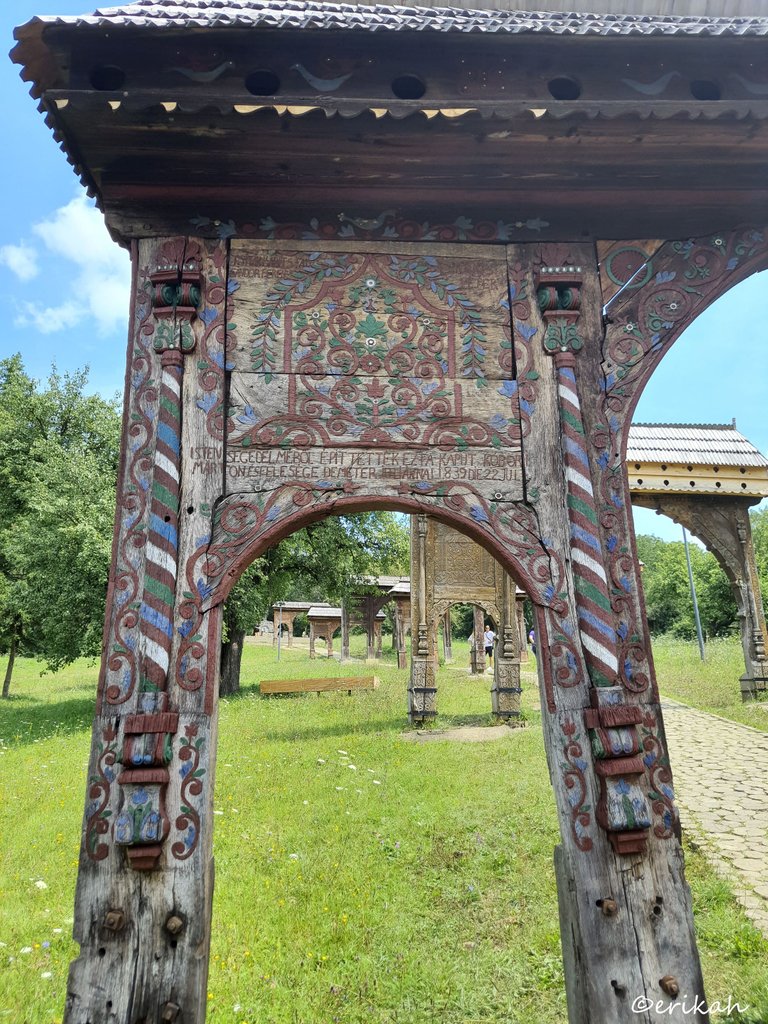
This is an old one, from 1839. What no one tells you is that these gates were born, so to speak, after a marriage took place and the young couple got their house ready. As the marriage was for life back then (Til Death Do Us Part was taken literally), these gates were also for life. Separation or divorce as not possible back then, so the gate was for life as well. Imagine how often one should replace the gate, or the carving on it today, when some people get married three or four times and some don't get married at all.
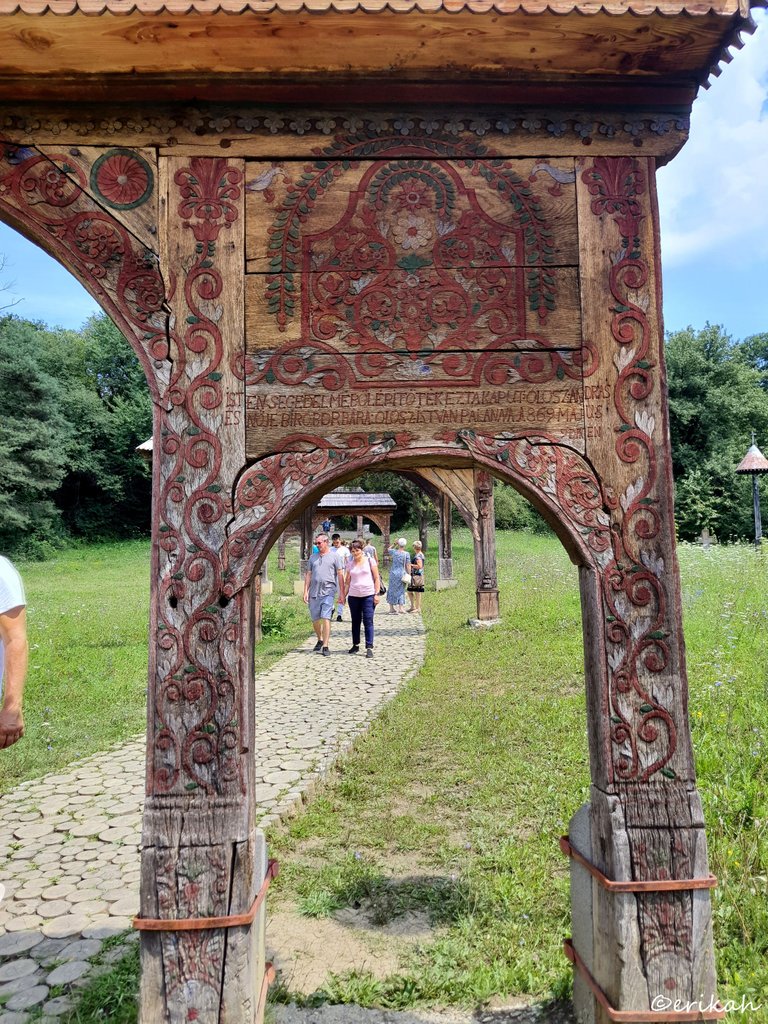
From 1869, which makes it 154 years old.

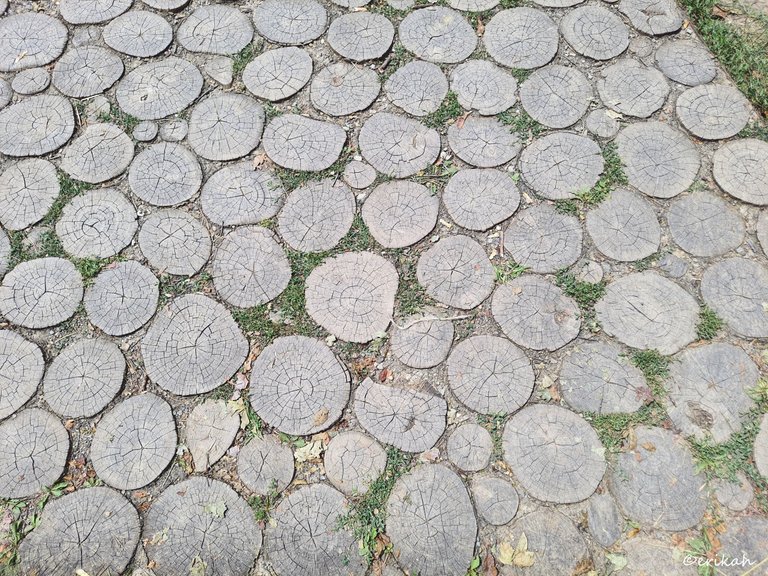
An interesting detail you may not noticed is the pavement. From far, it may look like cobblestone, but it's not. These are wood slices in the ground. It's all natural.
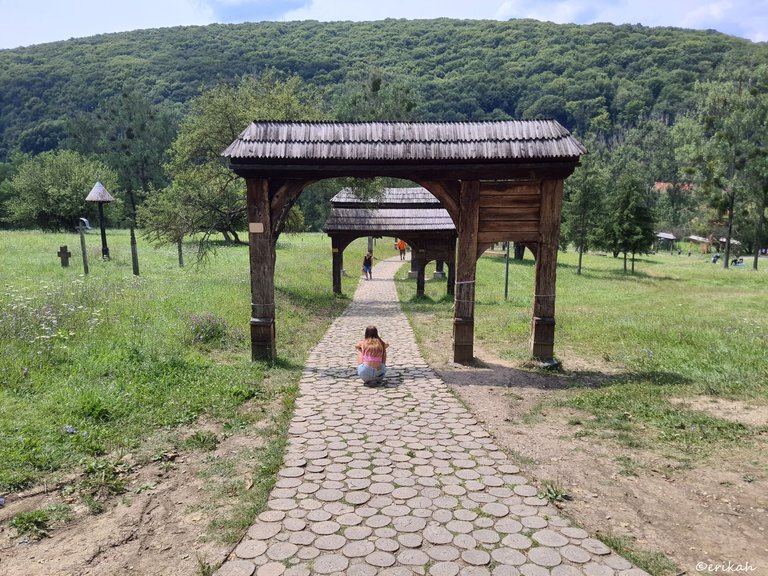
The view from the top.

At the top, on the top of the hill there's the grave of Balázs Orbán.
Balázs Orbán, Baron of Lengyelfalva (3 February 1829 – 19 April 1890) was a Hungarian author, ethnographic collector, parliamentarian, correspondent member of the Hungarian Academy of Sciences (1887). source
A little help for those who are not familiar with Transylvanian history. Lengyelfalva, where Balázs Orbán was born, was part of Hungary that time, then with the Treaty of Trianon in 4 June 1920, Transylvania became part of Romania.
Important to notice the two wooden poles at his headstone, which in Hungarian is called "kopjafa".
A "kopjafa" is usually a decorated memorial column carved from wood, less often from stone. A well-known cultural element of Székelyföld.
In general, it can serve as a memorial sculpture. It often has the height of a man, and is characterized by mature harmony and form. It is carved by art-loving folk artists, mostly according to arbitrarily established rules. Its wealth of motifs evokes the world of forms of Protestant button trees. The setting up of headstones can be traced back to an old Székely custom. During the funeral, the coffin was carried out to the cemetery on two poles called headstones, and these were pinned to the two ends of the grave. Although it has lost its original function, it can still be seen today in the Reformed cemeteries. source
There are separate symbols that are used for each category, like men, women, kids, unmarried women, unmarried men and so on. You can know who is in the grave, if you can read these signs.
As many people know, the tulip ending on tombstones has a feminine meaning. If tulip is not used as an ending, it refers to a girl child. All other endings are masculine. The religious symbols: cross, sad willow, Luther rose, etc. they are placed under the name or on the back surface. source
The two wooden poles here, as you can see, end in a round shape, which symbolizes a wealthy man. Social status was important back then and was often reflected on graves too.
This is definitely an interesting place, valuable as well, from historical point of view. Balázs Orbán was an important figure of Hungary's an Transylvania's history. In one of my upcoming posts I'm going to cover the Balázs Orbán visitor center, which is a museum next to his grave and tell you more about his life and work.

If you're a newbie, you may want to check out these guides:
- Communities Explained - Newbie Guide
- Cross Posting And Reposting Explained, Using PeakD
- Hive Is Not For Me
- How To Pump Your Reputation Fast - Newbie Guide
- Tips And Tricks & Useful Hive Tools For Newbies
- More Useful Tools On Hive - Newbie Guide
- Community List And Why It Is Important To Post In The Right Community
- Witnesses And Proposals Explained - Newbie Guide
- To Stake, Or Not To Stake - Newbie Guide
- Tags And Tagging - Newbie Guide
- Newbie Expectations And Reality

















